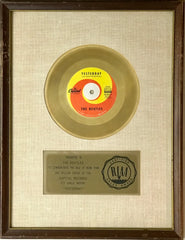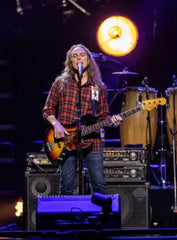Concert tickets and backstage passes have become excellent collectibles. Most are not overly expensive and they make a great scrap book project or, even better, make for a great art piece when designed into a collage to enjoy on a wall. Like most music collectibles, the artist matters (although also always a matter of personal taste), but older dated shows from an artist's early career or particularly famous shows can be the most highly sought after. Like with most collectibles, condition matters as well.
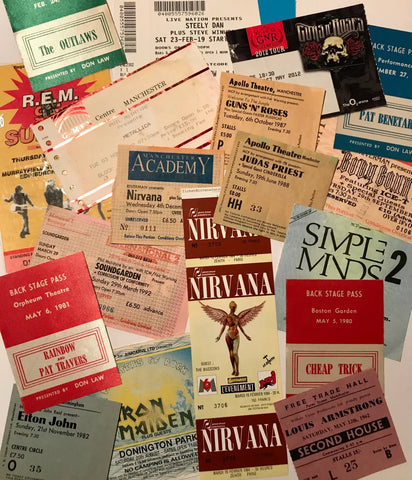
Concert tickets and backstage passes make great collectibles
Sometimes it's not about the artist, but rather the show. Take Woodstock for example. Woodstock tickets have become highly collectible. Here's one stained with Woodstock mud that is part of a collage honoring Jimi Hendrix's electrifying appearance there on Sunday, August 17, 1969:
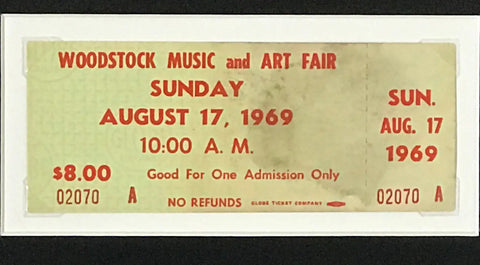
Jimi Hendrix Woodstock ticket collage, featuring ticket of the day of Hendrix's incendiary performance
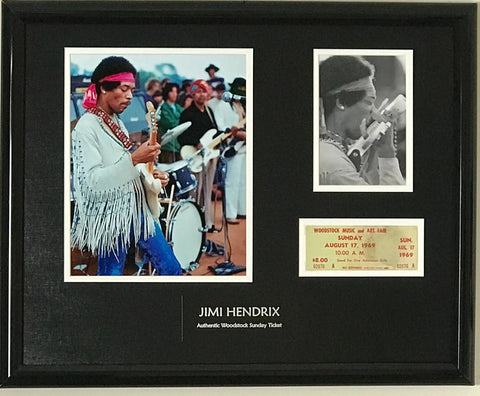
More examples of collectible tickets from festivals include those from Glastonbury, Live Aid, Live 8, Lollapalooza, and the US Festival, among others.
As mentioned, dates matter. An unused original Beatles ticket from their first full U.S. concert on February 11, 1964 in Washington, D.C. sold in 2016 for an incredible $30,000 at auction. In 2021, the seller is asking $45,000, which they may or may not get, but the market is certainly strong for these tickets.
Tickets from other early 1960s Beatles shows also sell for high prices, especially for genuine, unused examples in excellent condition. Professional examination and grading is recommended for these highest value tickets to ensure the ticket is genuine.
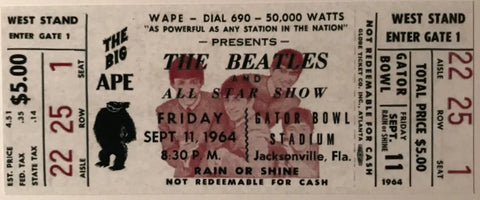
Early unused Beatles tickets sell for premium prices, especially those from their first U.S. shows in 1964
Other tickets from the 1960s can be just as historic and fascinating yet much more affordable than the extreme examples found with the Beatles. Take, for example, this trio of early 1960s tickets for jazz legends Louis Armstrong, Count Basie, and Ella Fitzgerald:
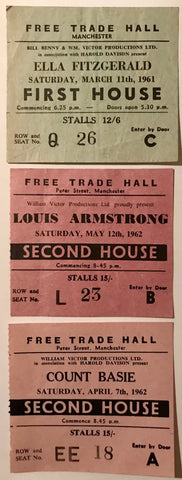
1961-62 tickets for jazz legends Louis Armstrong, Count Basie, and Ella Fitzgerald
Sometimes oddities make certain tickets more collectible. For example, in the midst of Nirvana's 1994 European tour Kurt Cobain was forced to check into an Italian hospital after, according to reports at the time, ingesting a combination of prescription tranquilizers and champagne. This caused their February 15, 1994 Paris concert to be cancelled. This made unused "cancelled show" tickets like this one very collectible:

February 15, 1994 cancelled Paris concert ticket
Tickets make for great collectible pieces of art when turned into a collage celebrating a favorite artist. Pairing tickets with photos of the era, records, guitar picks, buttons or other artist memorabilia and taking care to matte and frame them nicely is a great way to display tickets. Here are a few examples:
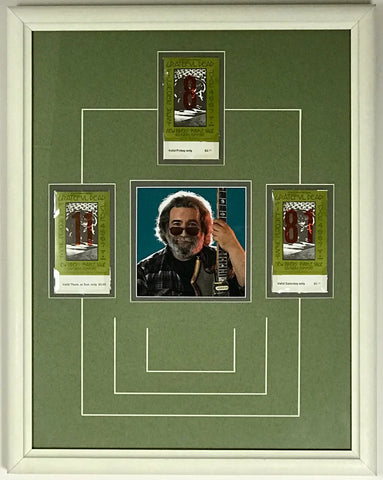
Grateful Dead June 4-7, 1970 concert ticket collage
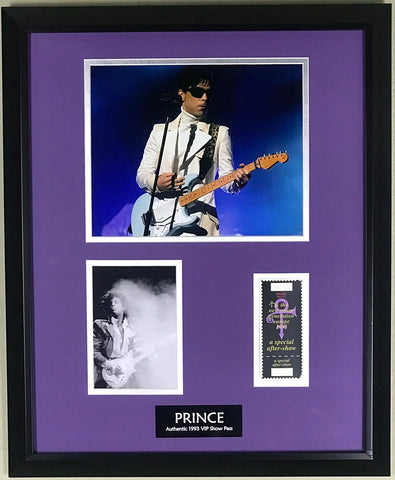
Prince 1999 after-show ticket collage
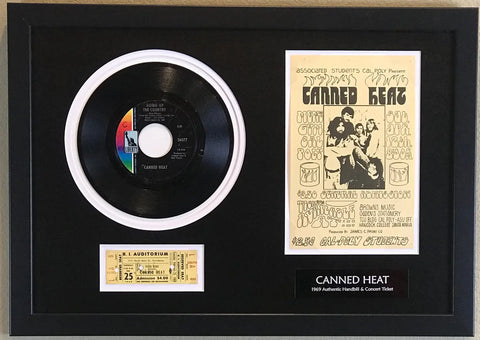
Canned Heat 1969 ticket collage with handbill and 45 record
Backstage passes are also popular among music memorabilia collectors. Their relative rarity makes them more expensive than tickets, with some exceptions. A range of passes can be found in the marketplace reflecting the different reasons the passes were issued in the first place. Early passes were simply labeled "Backstage Pass," "Stage Pass" or "All Access." Later, these and sometimes other separate passes were issued for "Crew," "Working Crew," "VIP," "Guest," "After Show" and other uses.
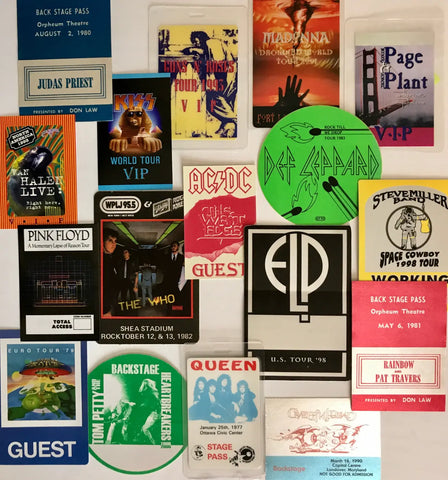
An array of backstage passes, some highly rare and collectible
Once again as with most collectibles, older is more valuable. Passes were simple cards that were sometimes laminated in 1970s (like the 1977 Queen example below) but self-stick passes became the norm by the end of the decade.
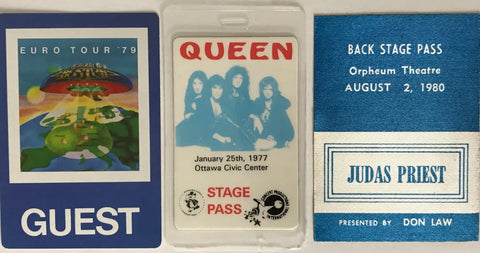
Like with most music memorabilia, older passes are more highly valued
In 1974 a company called Otto became a dominant supplier, at least in the U.S., with their satin cloth passes with self-stick backs. Many of the passes from the 1980s and almost all in the 1990s for U.S. concerts were made by Otto.
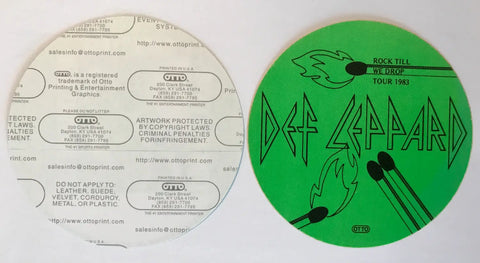 An unused 1983 Def Leppard pass made by Otto
An unused 1983 Def Leppard pass made by Otto
Another aspect of passes relates to those that are unused versus those that were used by stage crews and such and have markings or wear. Some collect new passes for their pristine condition, like the Def Leppard example above, while others find used passes, like the Boston example below, that were likely carried back and forth on the stage of the artist the most appealing.
 1998 Boston "stage-used" backstage pass
1998 Boston "stage-used" backstage pass
While some collections of passes end up on lanyards hanging on a doorknob, passes are also probably better displayed in collages to hang on one's wall. Here are a few examples:
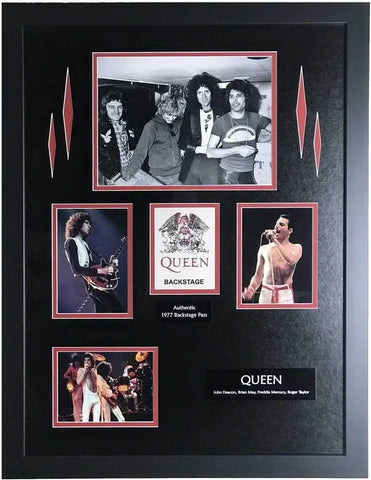
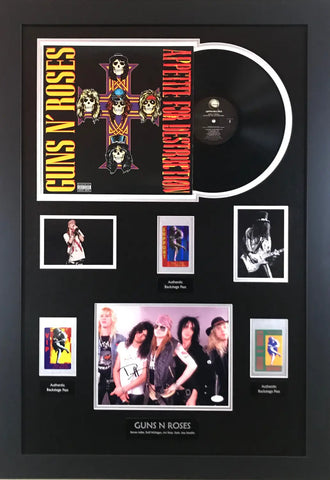
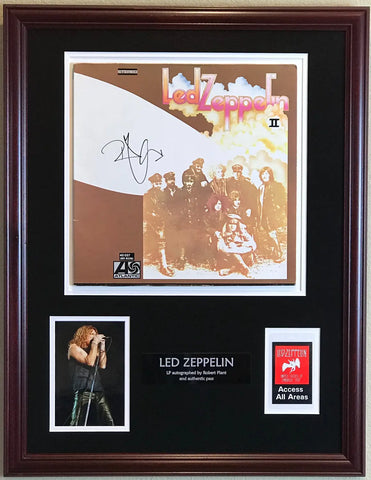
A backstage pass adds to this Robert Plant-signed Led Zeppelin II album collage
Small pieces of music history they may be, but concert tickets and backstage passes can make for a great collection. They remind you of shows you attended (or shows you wish you attended!) and chronicle one moment in a favorite artist's history.
Not to sound too grand, but they are also essentially historical documents that date to that time and place, held or worn by an excited concert goer. Or worn around the neck of one of the many crew members, guitar, drum or keyboard techs, front of house mix or monitor engineers, or other personnel that made those artists sound good, handed them their guitars and made their concerts run.
Check out our current selection of collages, many of which feature concert tickets or backstage passes, here.
Want more content like this? Subscribe to our free MusicGoldmine newsletter which comes out every two weeks. Go here to sign up.


